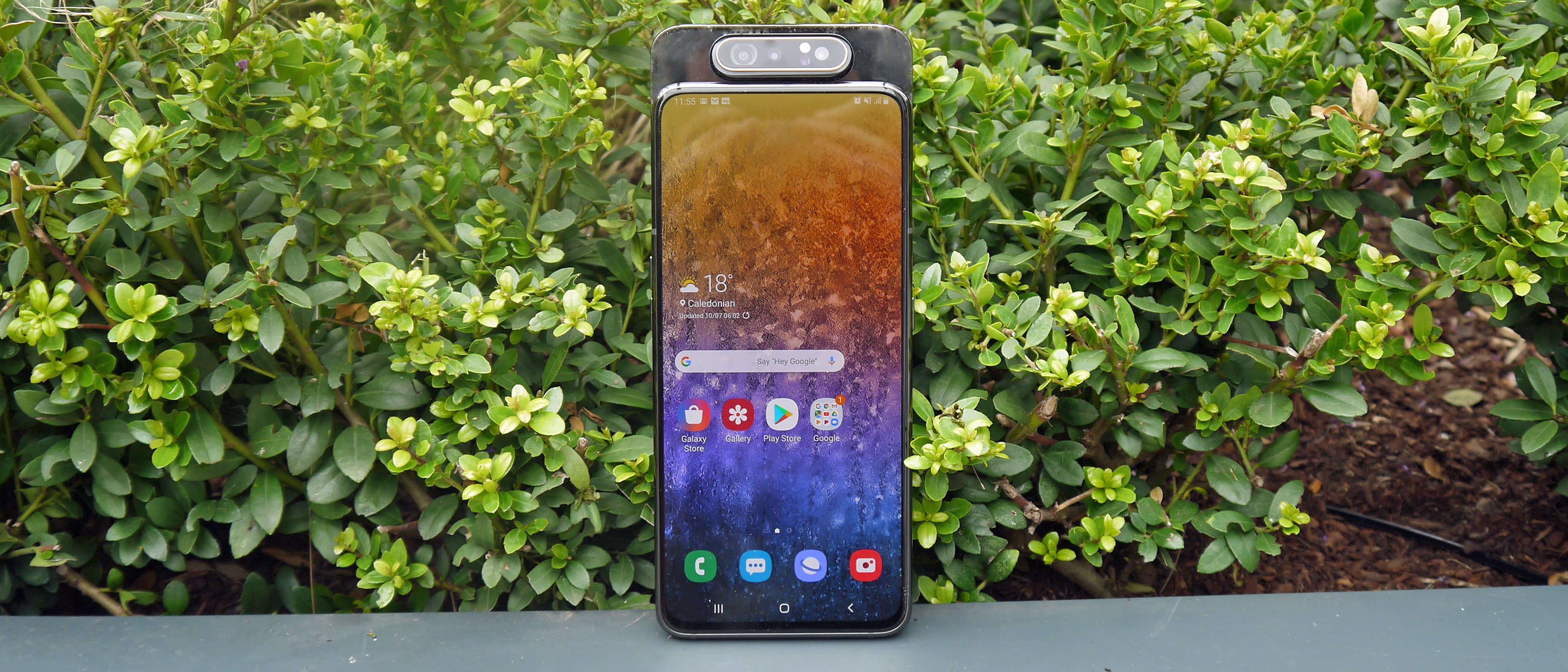Why you can trust TechRadar
Battery life
You’re getting a 3,700mAh battery in the Samsung Galaxy A80 – that may sound like a fair amount, but in practice it was just enough.
During moderate phone use, the battery would see us through the day, but only just. Heavy use saw us needing to power up the phone in the evening, and either way we had to make sure to charge the handset overnight if we wanted to use it the next day.
This heavy battery drain makes sense, as the motorized pop-up and big, bright AMOLED screen likely both draw quite a bit of power. However for a phone that’s aiming for a younger target audience, who may not think to put their phone on charge every night, a longer battery life would be appreciated.
The TechRadar battery test consists of playing a 90-minute video while the display is on max brightness, with Wi-Fi on and accounts syncing in the background, and seeing how far the battery percentage drops from 100%. The Galaxy A80 dropped 12%.
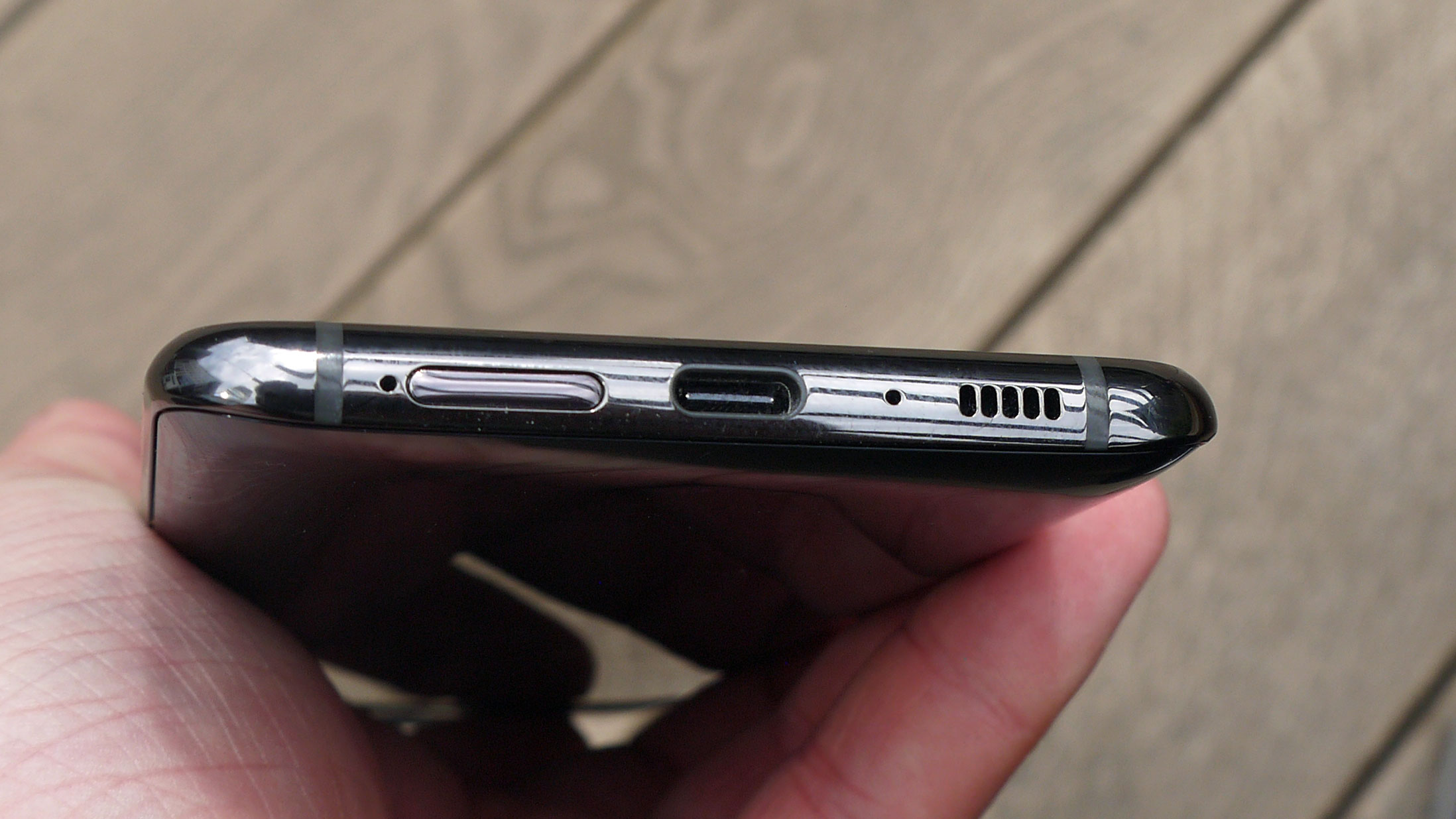
In comparison, the Google Pixel 3a dropped 16%, while the Huawei P30 only lost 7%. The Galaxy A80, then, got a fair score, as can be expected with Samsung devices, which can be relied on to play content without killing the battery.
If that’s good, powering up the device is fantastic thanks to Samsung’s 25W fast charge. After plugging the phone in for only a short amount of time the battery percent springs up, and it only took 40 minutes to charge from 0% to 50% battery. That’s fairly snappy, so the phone would be great for people who don’t get much time to plug in each day.
Camera
The Samsung Galaxy A80’s main camera is 48MP f/2.0, and it’s joined by an 8MP f/2.2 snapper with an ultra-wide lens and a 3D Time-of-Flight (ToF) f/1.2 camera that’s used to sense depth, for better portraits.
Let’s start with the third camera, the ToF lens, which is used to gauge depth and add bokeh background blur in Live Focus mode. Put simply, it’s really effective – portraits are some of the best we’ve seen from a smartphone in terms of appropriate levels of bokeh, and the backgrounds are never blurred so much they look artificial.
However, the ToF camera replaces the usual telephoto snapper we get on most smartphones, so zooming isn’t as much an option for photos. There’s no optical zoom, only digital, so images get grainy quickly when you try to zoom in.
Camera two is the ultra-wide lens snapper, and again we were impressed by pictures taken with it, as for the most part they don’t have the distorted edges of many other ultra-wide smartphone pictures, while retaining a high level of quality.
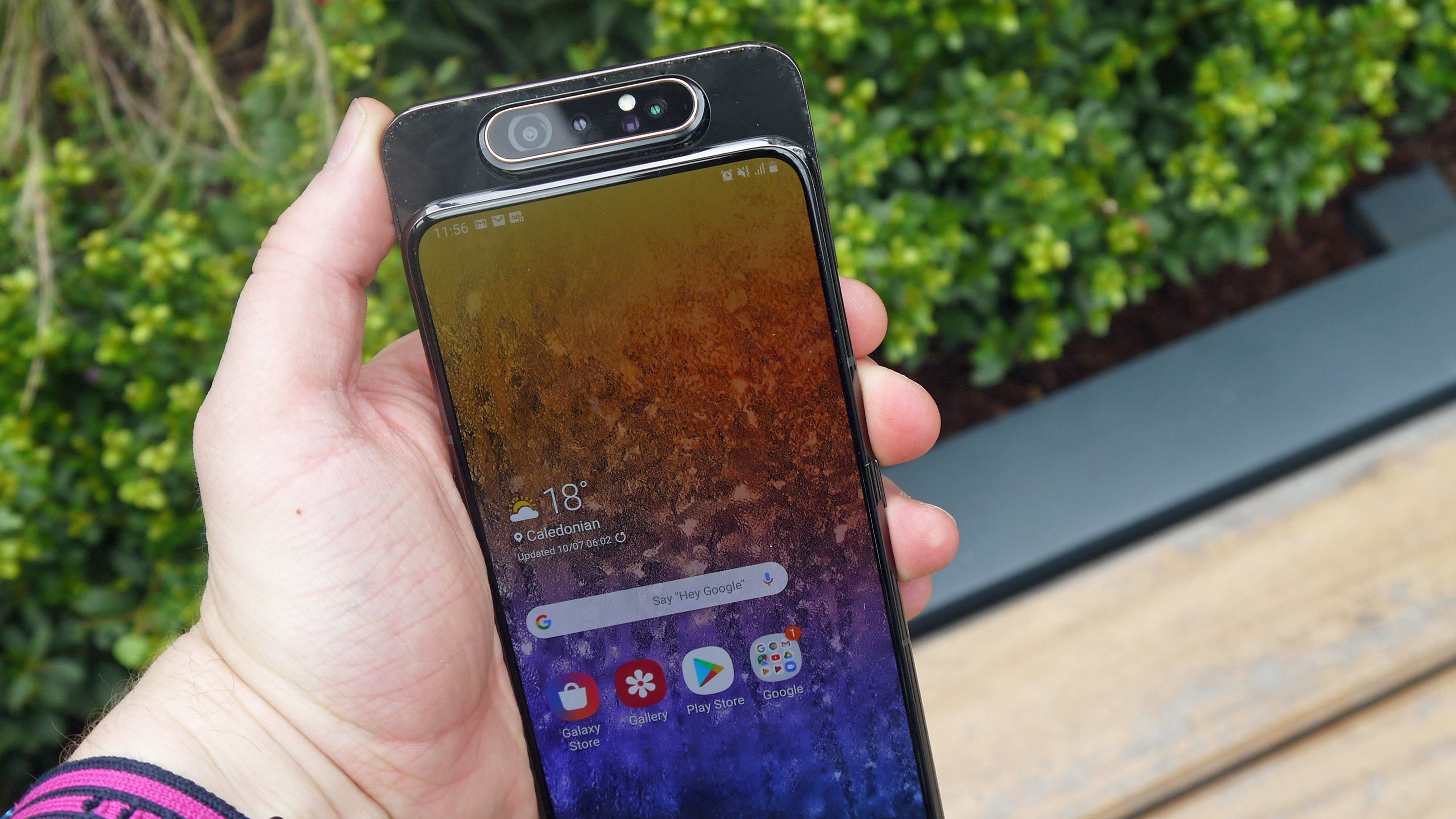
The main camera is more of a mixed bag. On the good side, color capture is great – blue skies, green t-shirts, navy candles all look vibrant without seeming artificial, even when scene optimization is turned off.
On the bad side, night sight results in pictures that could well just be normal photos taken in darkness, but with the brightness turned up. Details weren’t clear, and most shapes can’t even be made out.
Then to the ugly side – scene optimization. All it seemed to do was make colors brighter, without any of the subtlety or nuance you’d find on something like a Huawei device, and on top of that it took quite a long time to recognize a scene.
In general photos were OK, but a mixed bag of processing systems meant they were only that – OK – instead of fantastic in any way.
This is usually the point where we talk about the front-facing camera, but in the Galaxy A80 the ‘front’ and ‘back’ cameras are actually the same, so pictures taken are identical – though there aren’t as many functions.
When you pop up the panel to take a front-facing picture, the camera app has fewer options than when you’re taking a rear-facing picture. For one, night and panoramic photography modes disappear so you can’t take a low-light selfie, you can’t zoom in either, and there’s no scene optimization option.
We can’t think of a reason why you wouldn’t be able to use these modes, since you can when the exact same cameras are pointed the other way, but they’re just one of the few ways the camera app presents you different options depending on which way it’s flipped.
Some of the options are more useful, like an ultra-wide angle selfie mode that lets you choose from a variety of fields of view depending on how many people are in the picture, giving you better customization than portrait modes often do.
It’s quite novel for a smartphone’s secondary and tertiary cameras to be more useful than the main one, but while the ultra-wide and ToF lenses lent themselves to great panoramic and portrait pictures respectively, we weren’t as impressed by photos taken with the main camera.
Camera samples

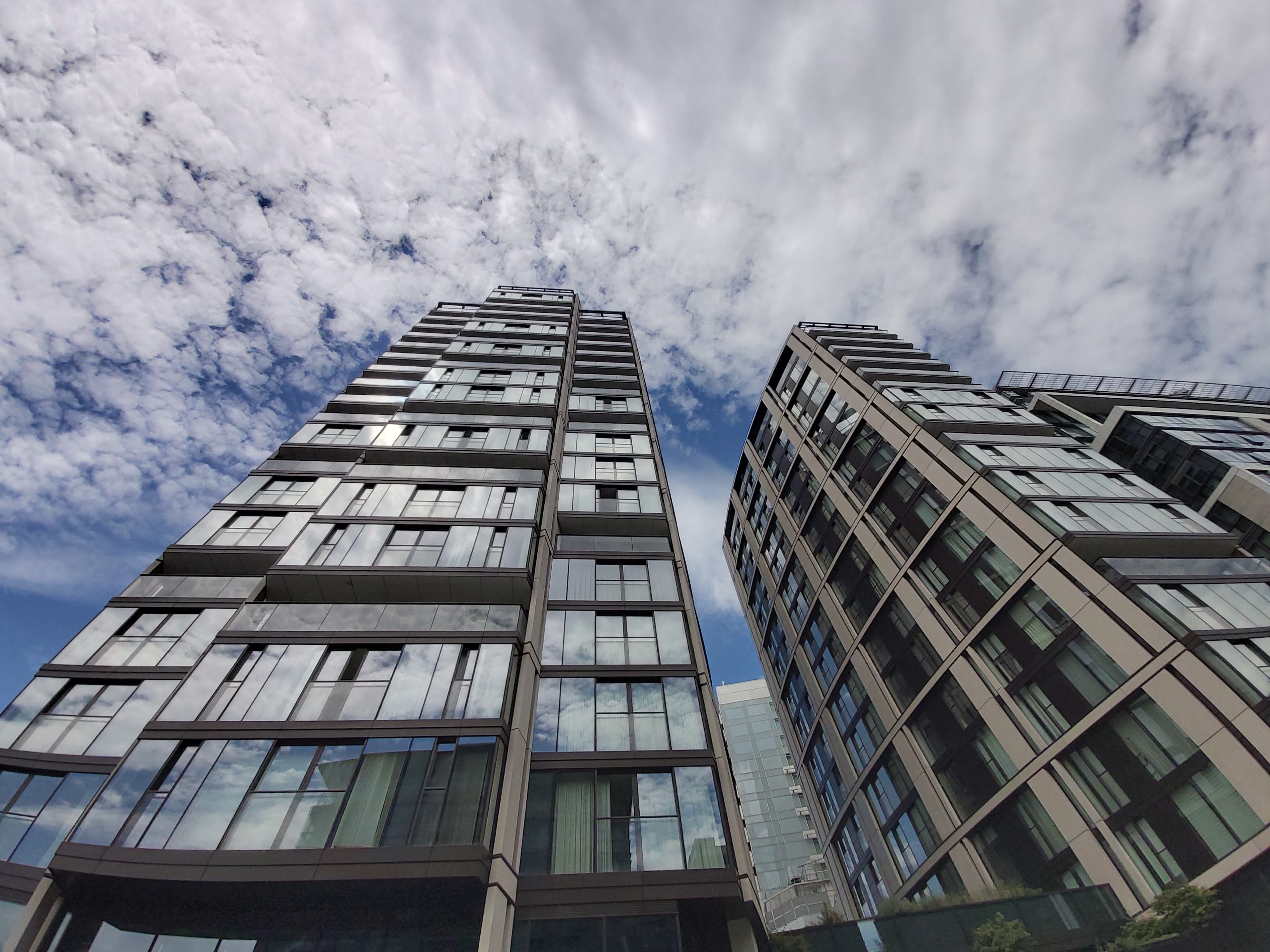
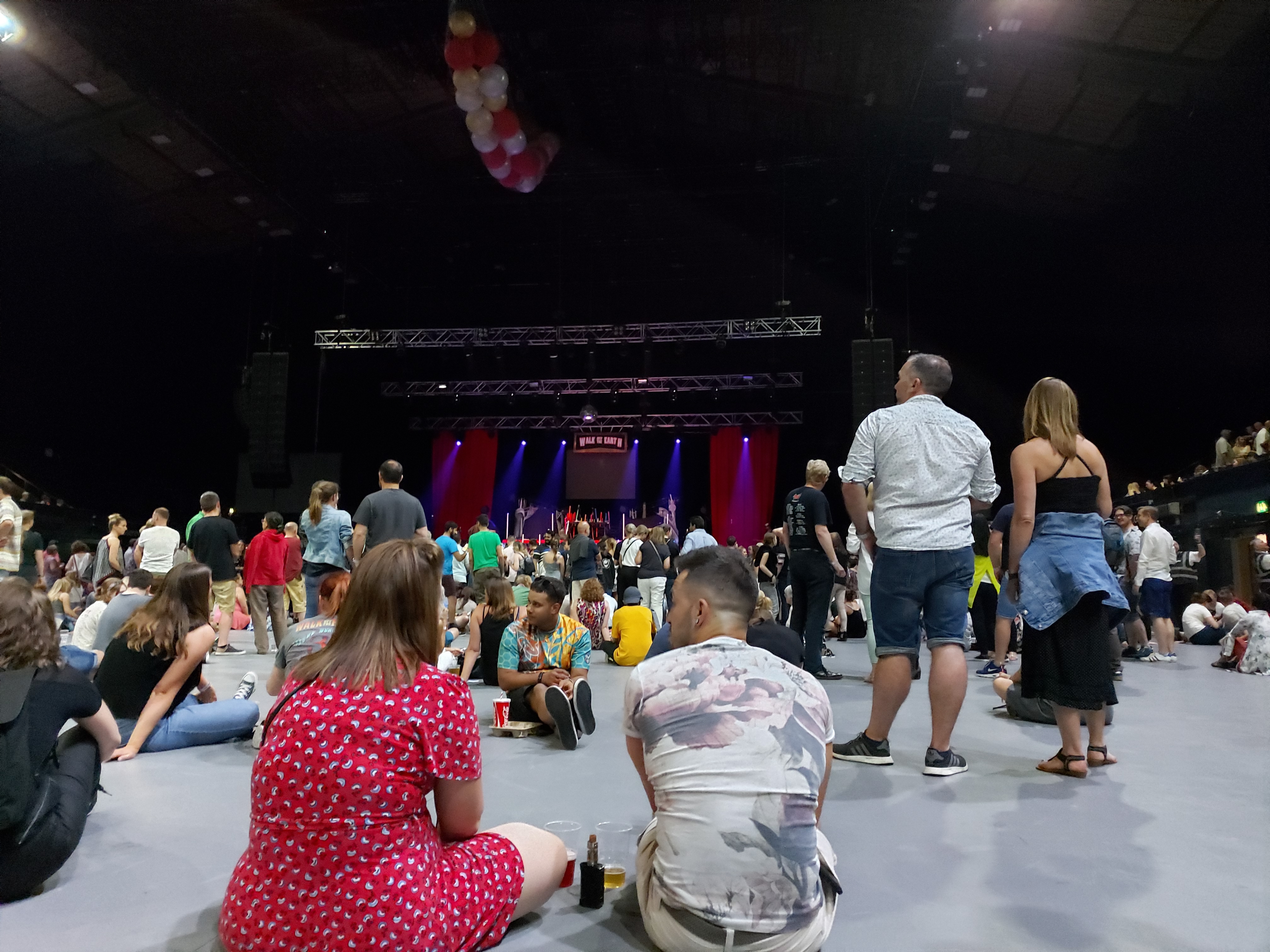
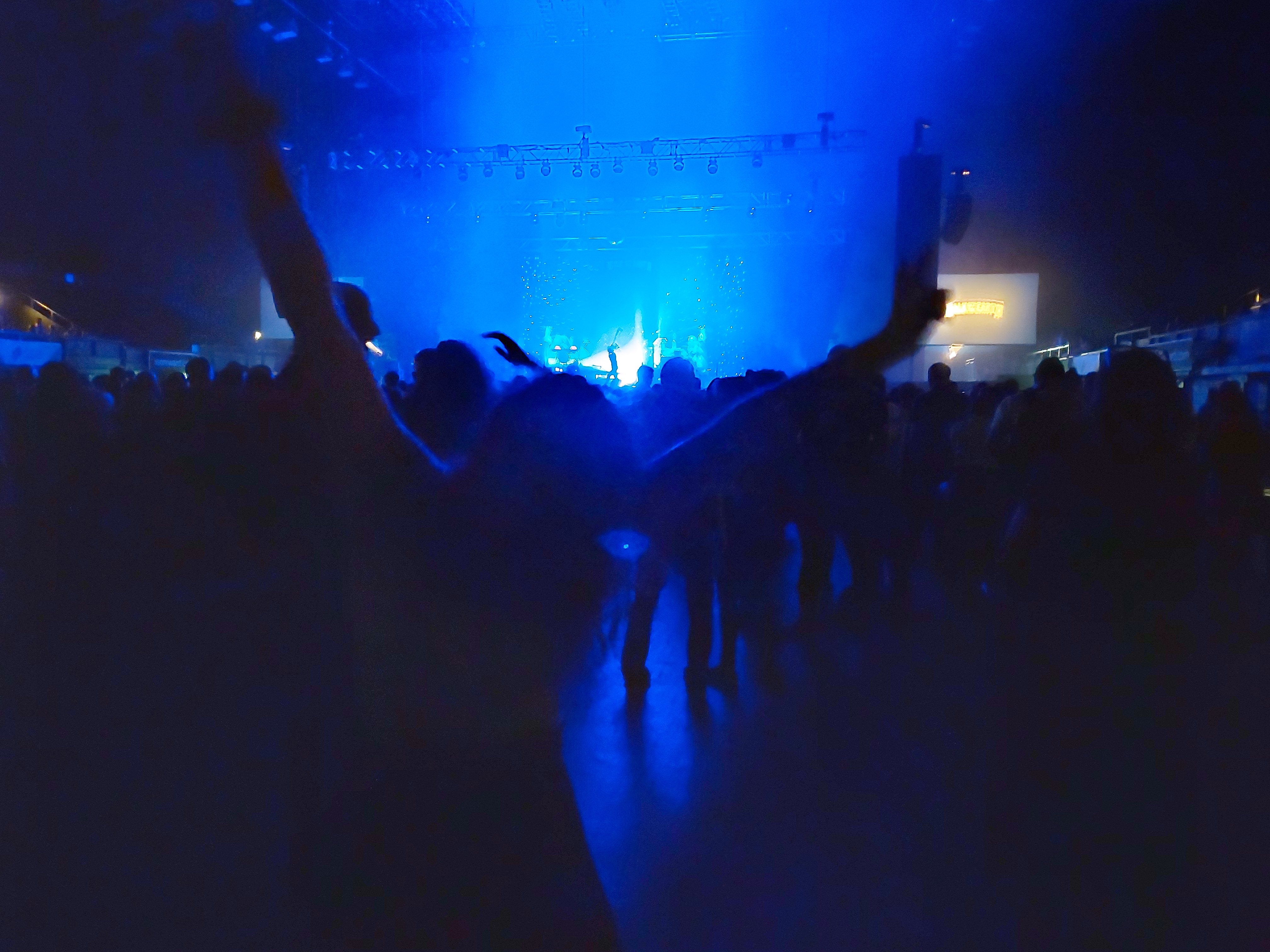

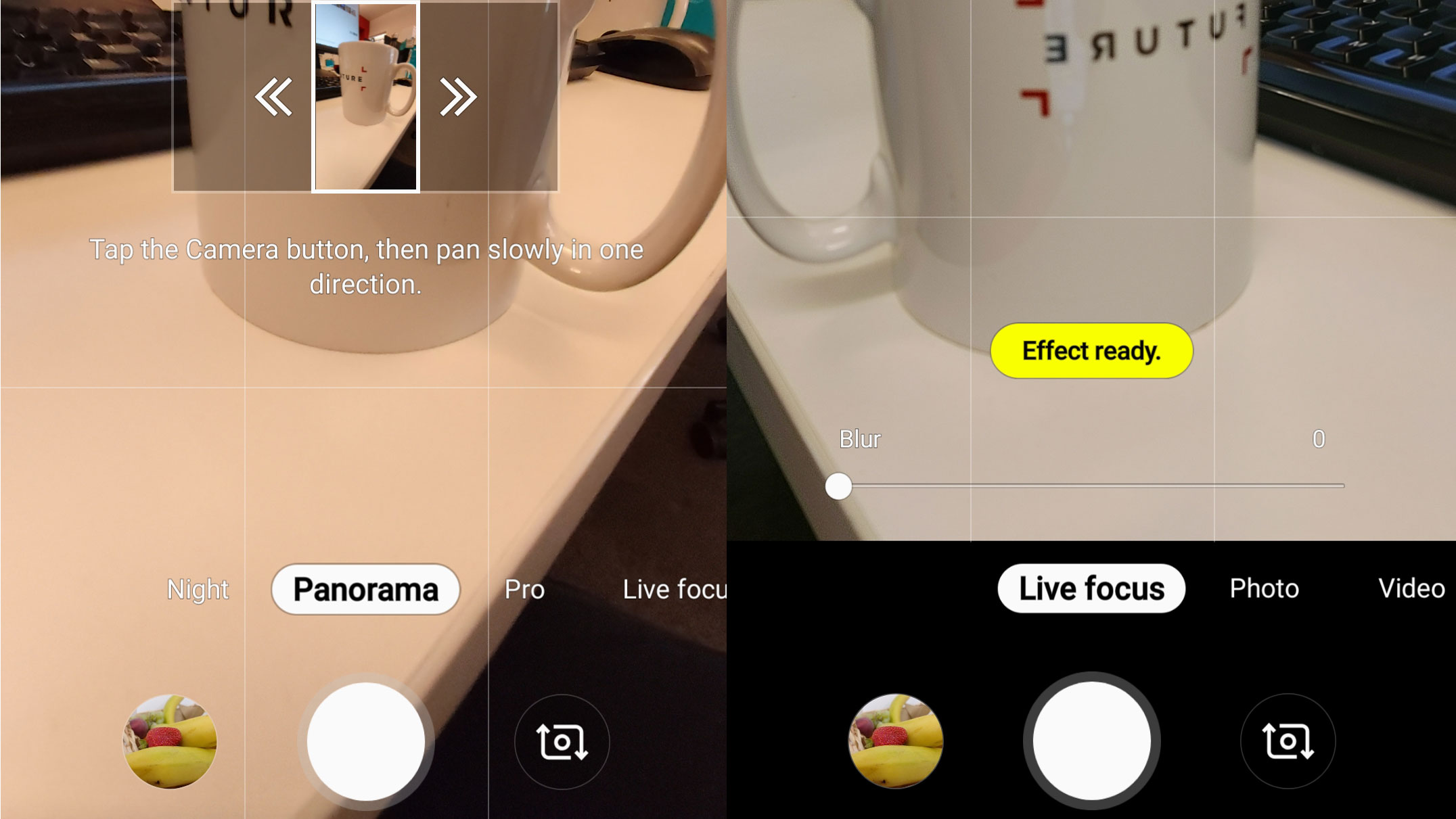
All photos from the camera test are credited to TechRadar
Current page: Battery life and camera
Prev Page Introduction, availability and design Next Page Anything else I should know?
Tom Bedford joined TechRadar in early 2019 as a staff writer, and left the team as deputy phones editor in late 2022 to work for entertainment site (and TR sister-site) What To Watch. He continues to contribute on a freelance basis for several sections including phones, audio and fitness.
